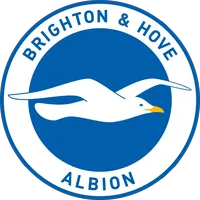

Established in
Total Trophies
Current Players
Founded in 1901, Brighton began its journey in the Southern League before eventually joining the Football League in 1920. For much of their early existence, they operated in the lower tiers, a far cry from their Premier League standing today.
The club's first major moment came in 1983 when they reached the FA Cup final. Although they narrowly lost to Manchester United in a replay after a dramatic 2-2 draw in the initial match, the "And Smith must score" moment, where Brighton missed a late chance to win, remains a defining piece of FA Cup folklore. However, despite that remarkable cup run, Brighton suffered relegation from the First Division (now the Premier League) in the same year, marking the start of turbulent times.
The 1990s were a particularly difficult period for Brighton. They faced severe financial struggles, which nearly led to the club's demise. They lost their beloved Goldstone Ground in 1997 and played their home matches at Gillingham's Priestfield Stadium, 70 miles away, before moving to the Withdean Stadium in 1999. It was a tough existence, with the club flirting with relegation to non-league football.
A turning point came when Tony Bloom, a lifelong fan, took over in 2009. His investment and ambition helped Brighton rise through the ranks, culminating in the opening of the state-of-the-art Amex Stadium in 2011. This new home symbolized a new era for the club, and under managers like Gus Poyet and Chris Hughton, the Seagulls returned to the top-flight in 2017 after a 34-year absence.
Since then, Brighton have established themselves as a competitive Premier League side, known for their attractive football and excellent recruitment. Under the guidance of managers like Graham Potter and Roberto De Zerbi, they have become a team that challenges even the league’s top sides, a remarkable turnaround for a club that once teetered on the edge of extinction.
ScoreWaves © 2025 Copyright. All Rights Reserved.